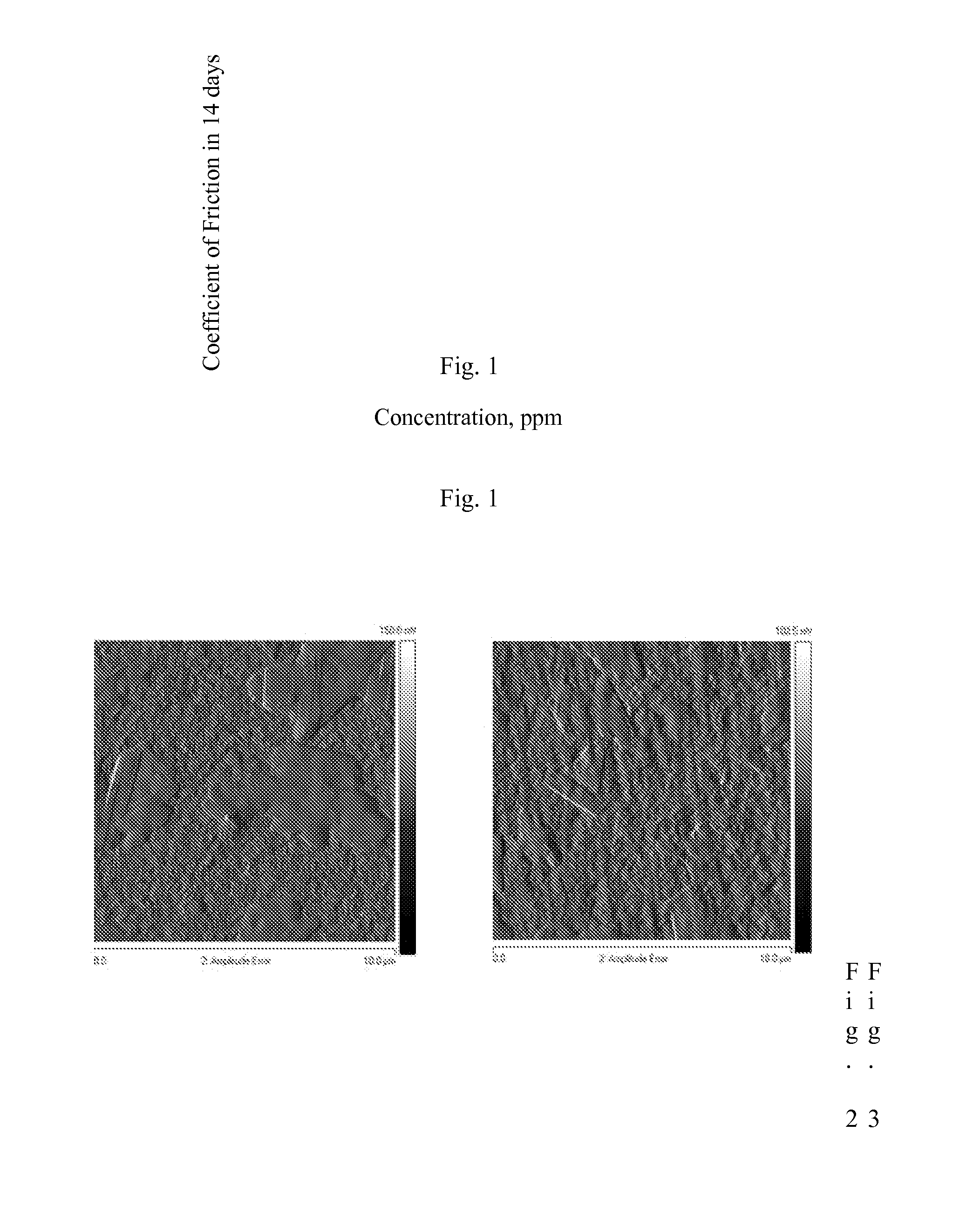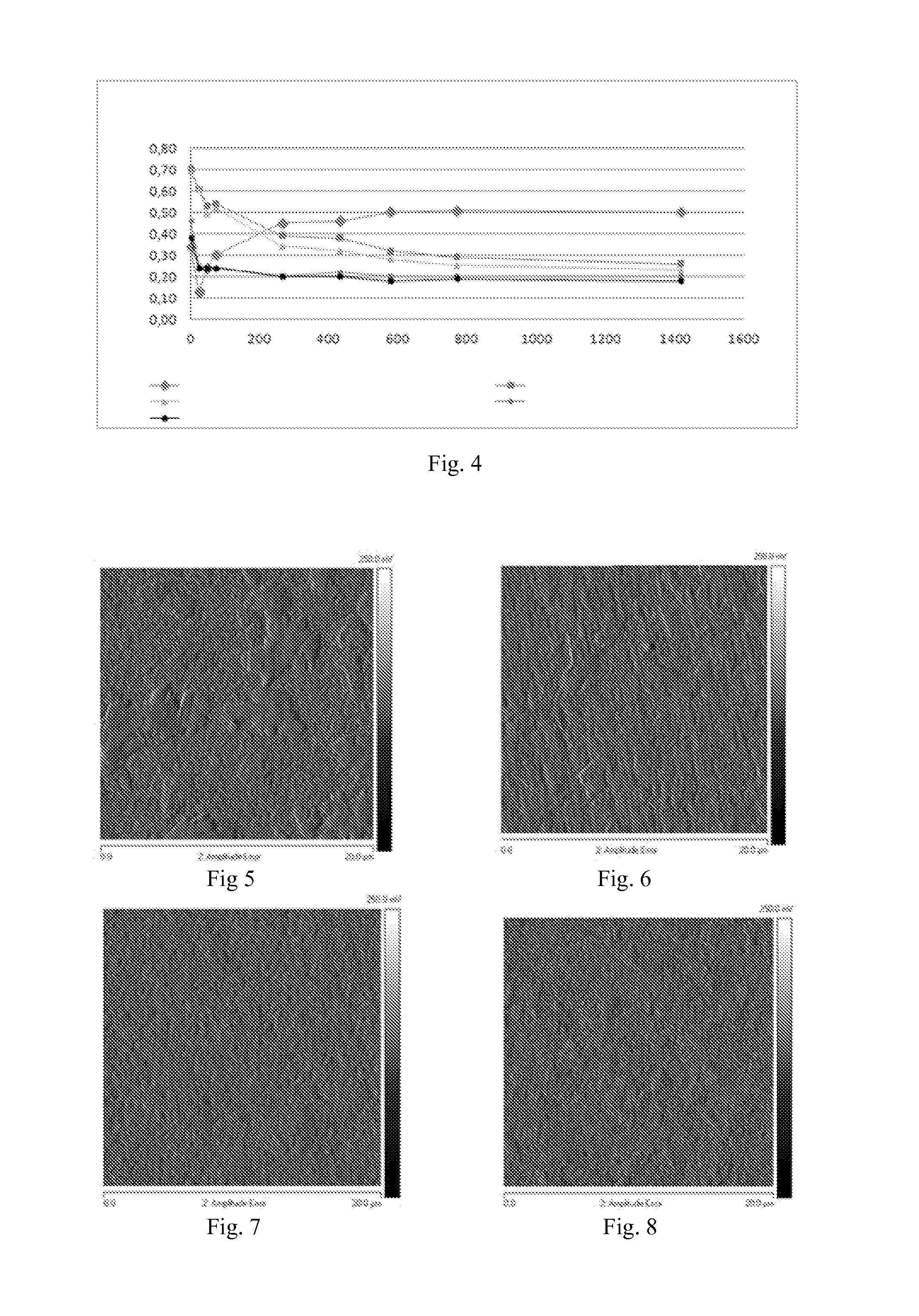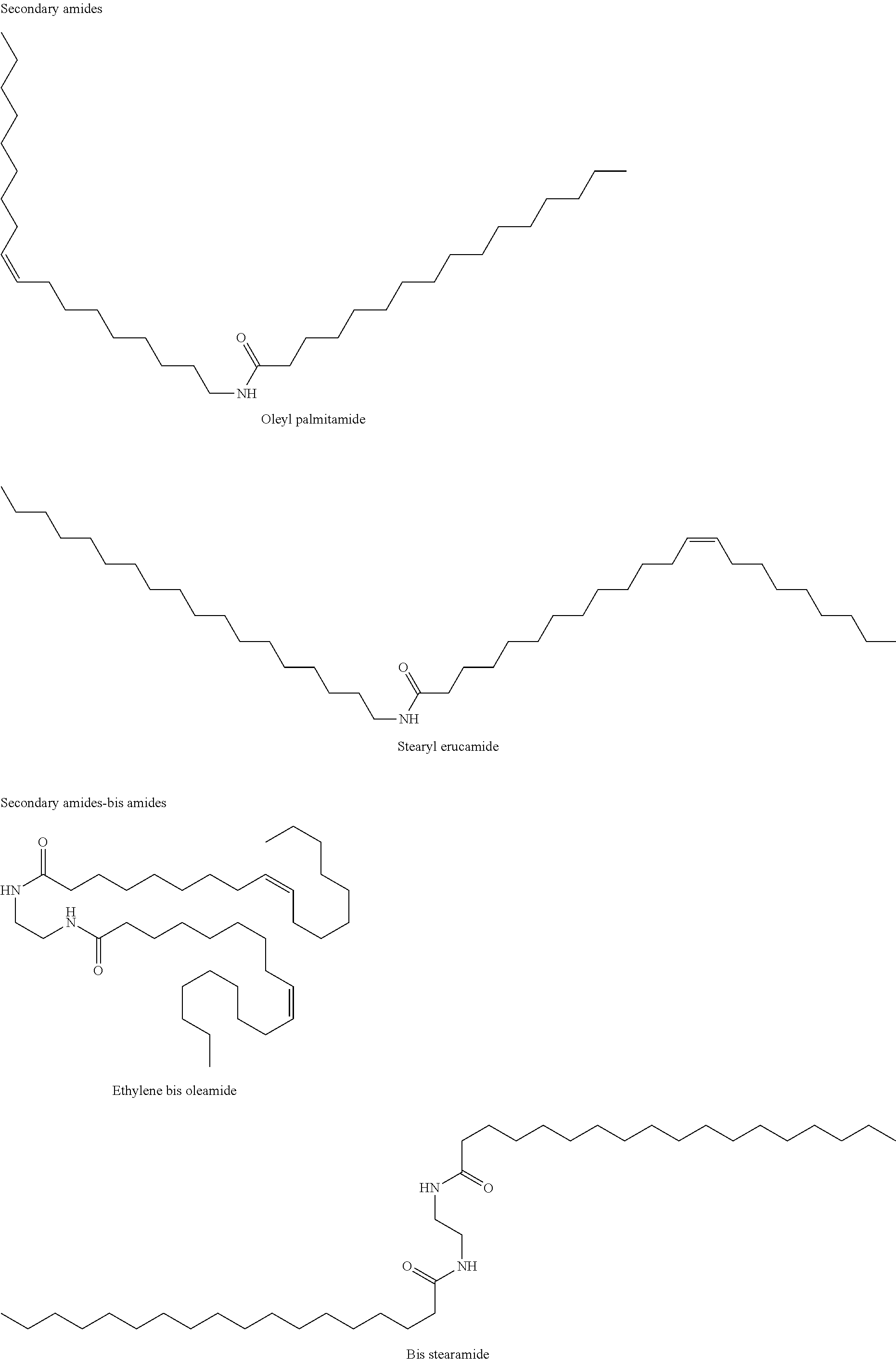Thermoplastic resin composition comprising a mixture of slip agents and a mono-or co-extruded, laminated or non-laminated film
a thermoplastic resin and additive agent technology, applied in the field of thermoplastic resin composition, can solve the problems of difficult to predict and/or reproduce the cof values of films and laminates, entail organoleptic restrictions, and less effective in achieving low cof values
- Summary
- Abstract
- Description
- Claims
- Application Information
AI Technical Summary
Benefits of technology
Problems solved by technology
Method used
Image
Examples
examples
1st Example
Monolayer PE Film
[0046]The purpose of this evaluation was to establish a comparative analysis between films additivated with erucamide (a primary amide) and / or EBO (a secondary amide of the bis amide type). The Sample A contains erucamide, and Samples B and C contain different contents of EBO, while Samples D and E contain the joint use of these additives in different proportions.
TABLE 1Monolayer film, thickness of 30 microns, LLDPE resin, ZN catalyst, MFR 190 / 2.16 =1.0 g / 10 min., density = 0.917 g / cm3, butene comonomer.Film samplesSamplesCharacteristicsABCDECompositionErucamide, content in ppm1000500500Ethylene bis oleamide,1500200010001500content in ppmIMMEDIATE BLOCKING68788COLD BLOCKING47465HOT BLOCKING410544GLOSS 60° FILM76.368.86377.776.3OPACITY FILM16.319.919.716.320CLARITY FILM94.794.694.294.694.2CoF EXT / EXT IMMEDIATE0.340.700.690.460.38PropertiesCoF EXT / EXT 24 h0.130.610.610.250.24CoF EXT / EXT 48 h0.240.530.490.230.24CoF EXT / EXT 72 h0.300.540.520.240.24CoF EXT / EXT...
PUM
| Property | Measurement | Unit |
|---|---|---|
| Fraction | aaaaa | aaaaa |
| Percent by mass | aaaaa | aaaaa |
| Percent by mass | aaaaa | aaaaa |
Abstract
Description
Claims
Application Information
 Login to View More
Login to View More - R&D
- Intellectual Property
- Life Sciences
- Materials
- Tech Scout
- Unparalleled Data Quality
- Higher Quality Content
- 60% Fewer Hallucinations
Browse by: Latest US Patents, China's latest patents, Technical Efficacy Thesaurus, Application Domain, Technology Topic, Popular Technical Reports.
© 2025 PatSnap. All rights reserved.Legal|Privacy policy|Modern Slavery Act Transparency Statement|Sitemap|About US| Contact US: help@patsnap.com



